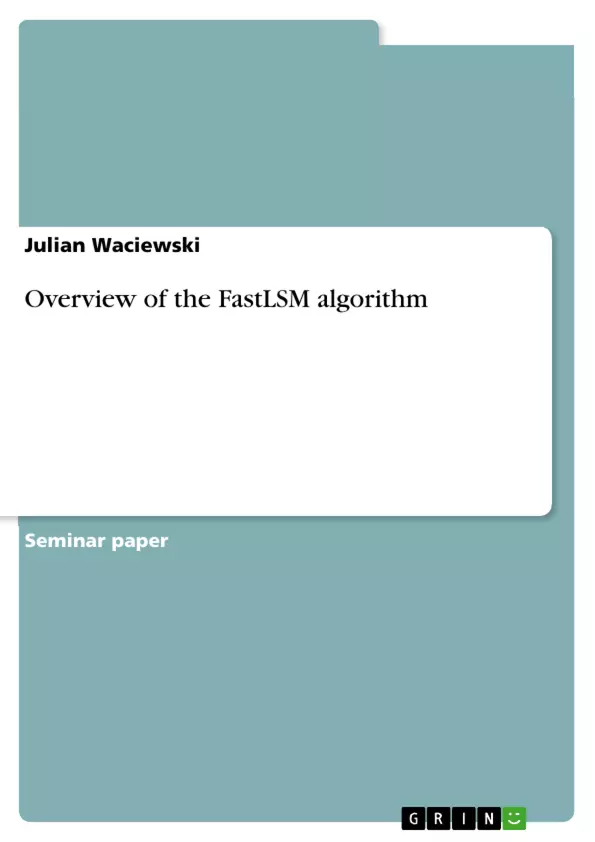Most algorithms simulating large deformational dynamics are limited in their area of operation. Issues arise with robustness, speed, effciency, and range of motion. This report focuses on the FastLSM algorithmic approach by Rivers et al. which solves these problems by using a geometric approach.
They extended the Lattice Shape Matching algorithm to apply it to different objects, as well as implementing an algorithm to speed it up for simulation.
Inhaltsverzeichnis (Table of Contents)
- 1 Introduction
- 1.2 Related Work
- 3 Preliminaries
- 4 The Shape Matching algorithm
- 5 Lattice Shape Matching
Zielsetzung und Themenschwerpunkte (Objectives and Key Themes)
This report examines the Fast LSM algorithm by Rivers et al., a geometric approach to simulating large deformational dynamics in game physics. The algorithm addresses limitations in robustness, speed, efficiency, and range of motion found in other methods. It achieves this by extending the Lattice Shape Matching algorithm and incorporating speed-enhancing techniques.
- Robustness and stability of deformable body simulation
- Speed and efficiency improvements in real-time applications
- Geometric approach to deformable physics simulation
- The application of the Lattice Shape Matching algorithm
- Comparison with traditional numerical integration techniques
Zusammenfassung der Kapitel (Chapter Summaries)
Chapter 1: Introduction introduces the challenges in simulating deformable physics, highlighting the limitations of physically accurate yet slow methods and faster but less realistic alternatives. It positions the Fast LSM algorithm as a solution that balances realism and computational efficiency.
Chapter 1.2: Related Work discusses existing deformable Shape Matching algorithms and the limitations of traditional numerical integration techniques, particularly concerning robustness and energy preservation. It sets the stage for the Fast LSM algorithm as an improvement upon these existing methods.
Chapter 3: Preliminaries lays the mathematical foundation, covering concepts such as rotation matrices, Euler integration, and the concept of stability in dynamical systems. This section provides the necessary background for understanding the subsequent algorithmic descriptions.
Chapter 4: The Shape Matching algorithm details the core Shape Matching algorithm, explaining how it finds the optimal rotation and translation to match a deformed shape to its original configuration. It describes the use of least-square distances to maintain physical plausibility and the modified Euler integration scheme for stable updates.
Chapter 5: Lattice Shape Matching describes how the Shape Matching algorithm is extended to a lattice structure of voxels, allowing for efficient simulation of complex shapes. This section explains the process of voxelization and the benefits of overlapping Shape Matching regions in terms of speed and efficiency.
Schlüsselwörter (Keywords)
Fast LSM algorithm, deformable physics, game physics, Lattice Shape Matching, numerical integration, robustness, efficiency, real-time simulation, geometric approach, voxelisation, stability.
- Quote paper
- Julian Waciewski (Author), 2022, Overview of the FastLSM algorithm, Munich, GRIN Verlag, https://www.grin.com/document/1506318



